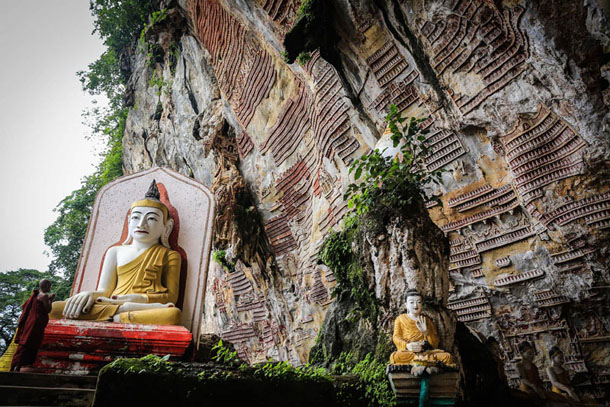Mawlamyine or Moulmein as it was once known is located 300km southeast of Yangon and it is the fourth largest city in Myanmar. Not only was Mawlamyine the first British colonial capital (1826-1852), but it also features in the opening lines of Rudyard Kipling’s famous poem, Mandalay. It reads, “By the old Moulmein, pagoda lookin’ lazy at the sea, there’s a Burma girl a-settin’ and I know she thinks o’ me”.
Located at the mouth of the Thanlwin (Salween) River, Mawlamyine is the charming tropical capital of Mon State and one-time administrative centre of British Burma which has many old colonial buildings lining its quiet streets. It is also the major center of Mon culture.
Mawlamyine is an attractive and pleasant port with a ridge of hills on one side and the sea on the other. Its focal point is Kyaik Than Lan Pagoda which overlooks the town and offers great views of the surrounding area. Other attractions that are of historical and cultural interest in Mawlamyine are St Patrick’s Roman Catholic Church, the Soorti Sunni Jamai Mosque and the abandoned, red brick St Matthew’s church.
30km away is the small town of Thanbuzayat, the terminus for the infamous Burma-Siam railway linking Thailand and Myanmar during the Japanese occupation. Dubbed the “Death Railway” by those who were forced to build it, many allied prisoners of war lost their lives here – whilst emotional, a trip to the 3,771 graves at Thanbyuzayat War Cemetery is well-worthwhile.
Taking an enjoyable boat trip from Mawlamyine will bring you to Bilu Island where you can get around by motor-bike taxi (locally called tuk-tuk). The island, Bilu Kyaung or ‘Ogre Island’, makes for an excellent day trip with around 70 villages home to local cottage industries such as wood carving and pipe making. As cars are not allowed, you will need to travel by bike, horsecart or motorbike (tuk-tuk).
Mawlamyine is easily accessible by train or car from Yangon. Travel by car (around 5 hours) is more convenient.

